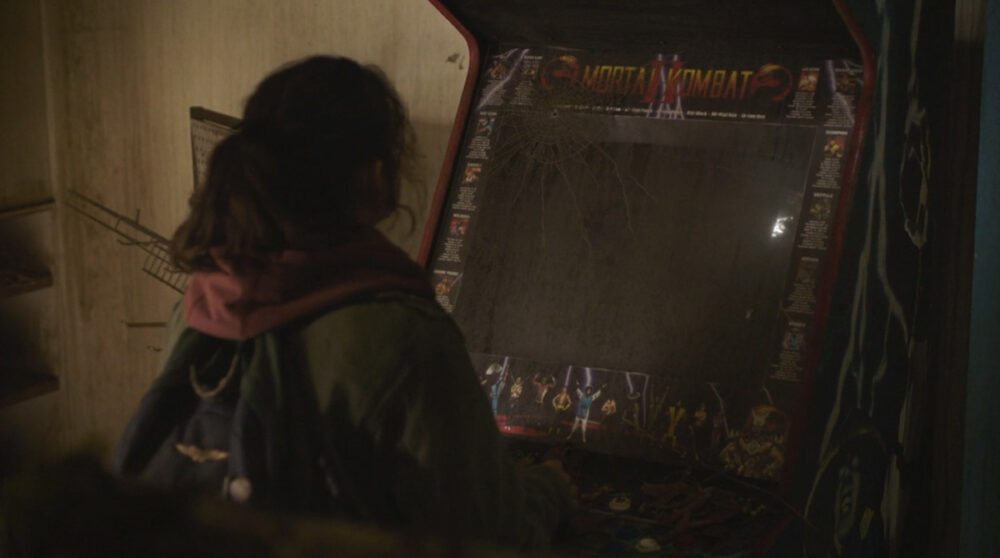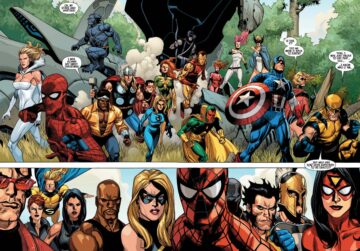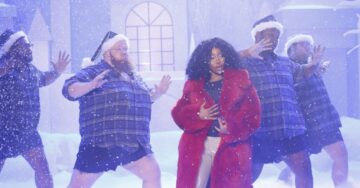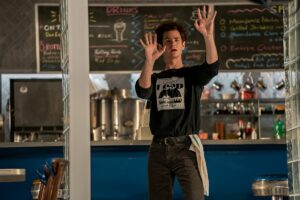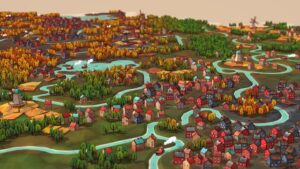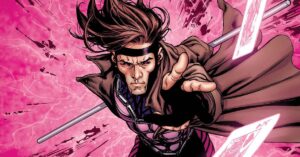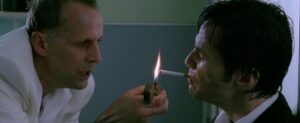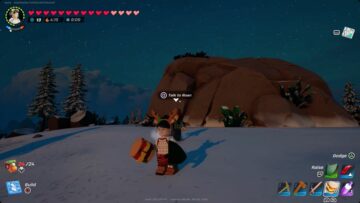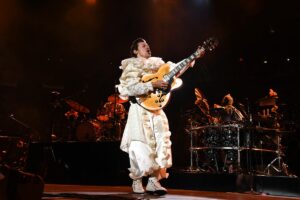HBO’s The Last of Us is a way to revisit the iconic and beloved video game of the same name — to revel in the ways it’s both unchanged and entirely different. For dedicated fans of the game, the appeal of The Last of Us is not necessarily in being surprised by twists and turns of the story; rather, it’s to see the franchise in a new light, picking out the little details that point back to the original media.
There’s plenty to see in that regard. Video games are known for their Easter eggs, the small and obscure references hidden as little surprises in the game. And so it makes sense that HBO’s The Last of Us would do the same, to make subtle (and not so subtle) nods to all the The Last of Us-heads out there. The Last of Us Part 1 felt like it so badly wanted to be a movie or show, and now the TV show is switching that up — at least in one way.
Episode 3
Cumberland Farms
Ellie and Joel stop at a Cumberland Farms gas station after leaving Boston. This isn’t a reference to the video games, but as a New England gal, I need to appreciate a nod to “Cumby’s,” as we like to call it. This chain of gas stations is located mostly in New England — making it a staple in Massachusetts, where this episode is set.
Mortal Kombat 2
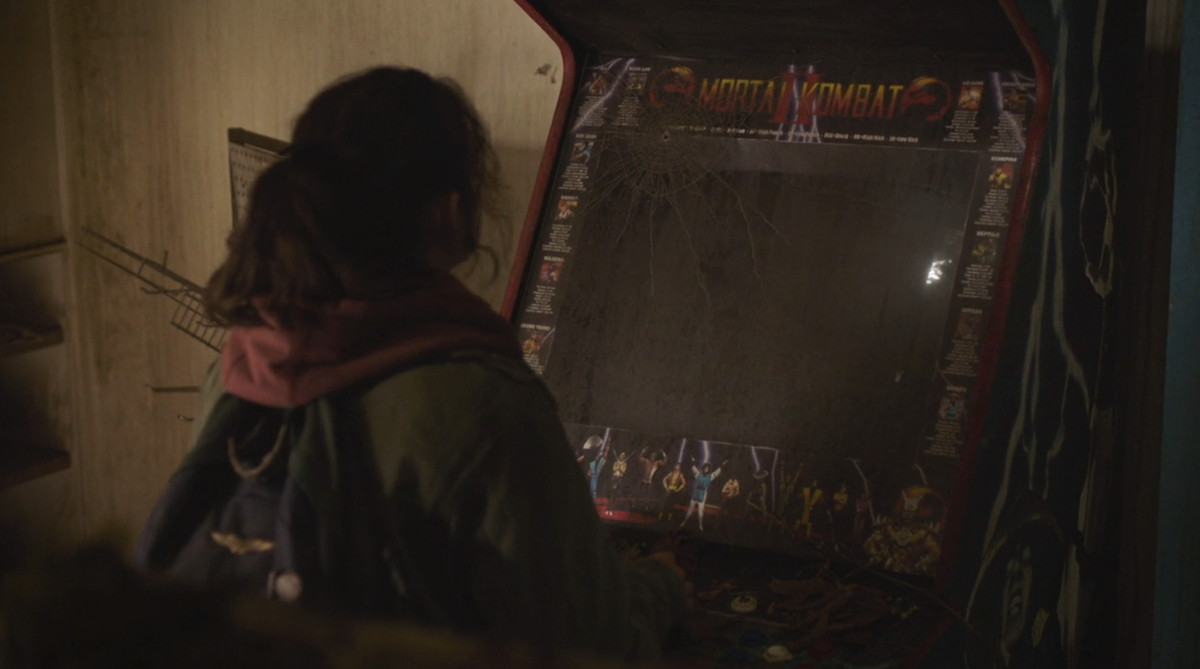
Mortal Kombat 2 is a classic arcade game from 1993, which means it came out around 10 years before the outbreak started in The Last of Us show. Ellie and Joel stumbled upon a Mortal Kombat 2 arcade game that’s, of course, not working. She explains to Joel that she’s got a friend who knows everything about the classic fighting game — probably a reference to Riley, who’s mentioned earlier in the show and stars in The Last of Us prequel Left Behind. Left Behind itself is largely set in a classic arcade inside an empty mall. And while the expansion didn’t. include a Mortal Kombat 2 reference, when it was included in The Last of Us Part 1, a poster for the game was added on one of the walls.
Pancake mix
On their way to Bill’s, Ellie asks Joel how the infection started — it’s not something they taught kids at FEDRA school, where Ellie went as an orphan. It’s revealed in episode 2 that the Cordyceps outbreak began in Jakarta, Indonesia, likely in a flour and grain factory. This is the answer that Joel gives Ellie, that the virus got into the grain supply, noting that these factories provided flour for major companies that shipped worldwide — everyday stuff, down to pancake mix.
That ties back to the first episode of The Last of Us, when Sarah’s making breakfast for Joel on his birthday. Everyone thought Sarah was going to make pancakes, but she made eggs instead, likely sparing them from ingesting infected flour.
Bill’s traps
OK, Bill’s traps. We see them in action around Bill’s suburban compound, which makes up a few blocks of his neighborhood, shops and all. They’re intense, but work: We see them successfully holding off intruders, both people and infected. The traps are just as innovative in the game, but spread throughout a larger area and super deadly for players. The amount of times I stumbled through a trap I didn’t see… it’s a lot. Quickly, though, you learn that bricks and bottles are important in getting through the level, thrown at the tripwires to set them off and breeze right through.
“Long, Long Time”
Linda Ronstadt’s “Long, Long Time,” from the 1970s, is a key part of The Last of Us’ most beautiful show moments. It’s not a reference to the video game, but I’m calling it out because the song holds so much meaning to the episode as a whole — it’s also the name of the episode.
Ellie’s red shirt
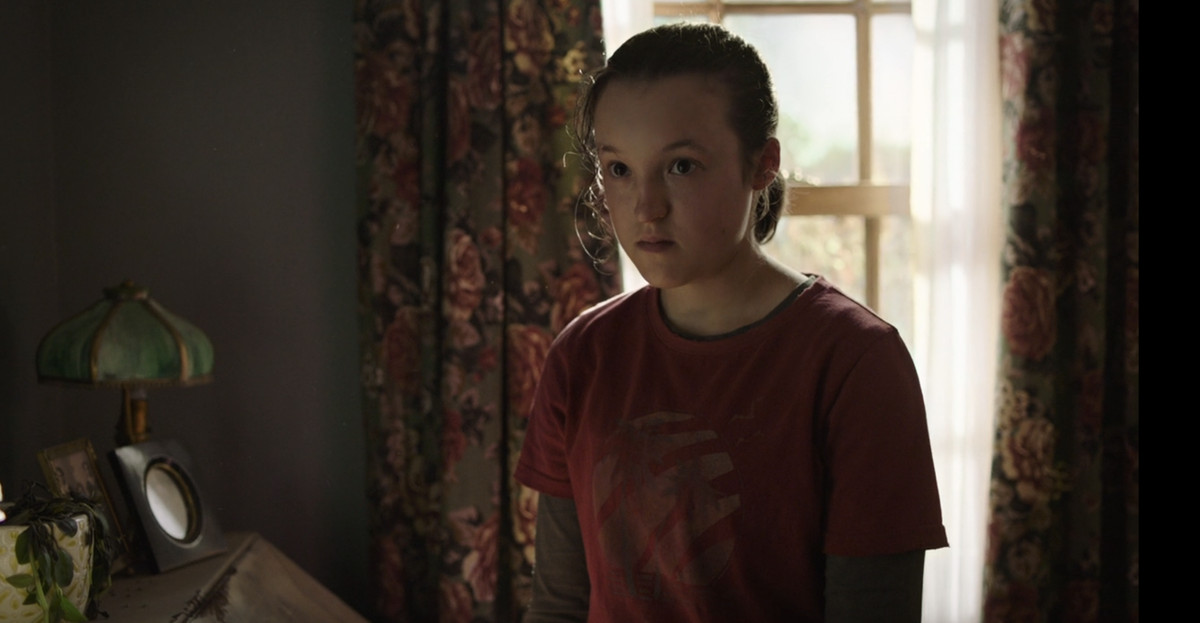
When we first meet Ellie’s she’s wearing a baseball-style T-shirt with a jacket and a hoodie. But at Bill’s, she gets a shower and a change of clothes — the iconic red shirt. It’s a shirt that she wears through the majority of The Last of Us Part 1, with a worn out, faded palm tree motif on the front.
Episode 2
Giraffe plush
There’s a dirty, run-down giraffe stuffed animal under a car’s tire as Ellie, Joel, and Tess escape through Boston. Anyone who has played the game will know immediately what this references: an iconic, touching moment that comes late in the first game, likely one of the most talked-about scenes in the game.
Ellie can’t swim
When Ellie, Tess, and Joel enter the hotel in Boston, they’ve got to trudge through some cloudy water. It’s where show viewers learn that Ellie can’t swim — maybe not a huge deal in the show, but that fact is essential in making the games’ environmental puzzles work. Ellie can’t swim in the first game, either — so to cross water, the player has to solve environmental puzzles to get her through, usually by finding a hidden floating pallet.
Locked doors
Like the floating pallets, locked doors in the video game serve to set players up for environmental puzzles. You can’t go straight through the door, and instead have to find a new way around. It’s in the game so much that the show’s re-creation likely elicited a groan from those who’ve played it. I cannot overstate how many times I’ve seen the animation for Joel lifting Ellie over a wall or into a window to go unlock a door.
The Boston museum
The Last of Us Part 1’s Boston escape takes players through the Freedom Museum of Boston, and the show has a pretty dang good re-creation of it. It’s likely drawing inspiration from the real-life Bostonian Society Museum. The museum itself is inside a colonial or colonial-style home, and the quarters are quaint. There’s lots of busts of old men to knock over, and in the dark, it’s a creepy venue to lurk around — is that shadowed head a clicker or a statue? (Probably a statue, unless it’s clicking.)
Tess’ lighter
Less a Last of Us Easter Egg, more a Naughty Dog one: Tess’ lighter in the second episode is a shoutout to Uncharted 4: A Thief’s End.
Health kits
Characters in a TV show don’t need to heal themselves, but players of the game will be extremely familiar with the act of putting together health kits with found alcohol and rags. But there are nods to this in the show — Joel gives Ellie a rag to cover her bite wound, and he tapes up Tess’ hurt foot using duct tape, another essential resource in the game.
Tess’ goodbye
Tess doesn’t last long in The Last of Us Part 1, and that’s the same for the show — she lasts two episodes. But the way she goes is different from the game. In both instances, she’s been bitten and gets left behind to hold off an oncoming horde. In the game, she’s holding off humans that are coming after the group, keeping them busy enough to give Joel and Ellie a head start for escape. But in the show, it’s a group of infected that are coming their way; she stops them from going after Ellie and Joel by blowing the whole place up after getting kissed (???) by a zombie.
Episode 1 Easter eggs
Halican Drops
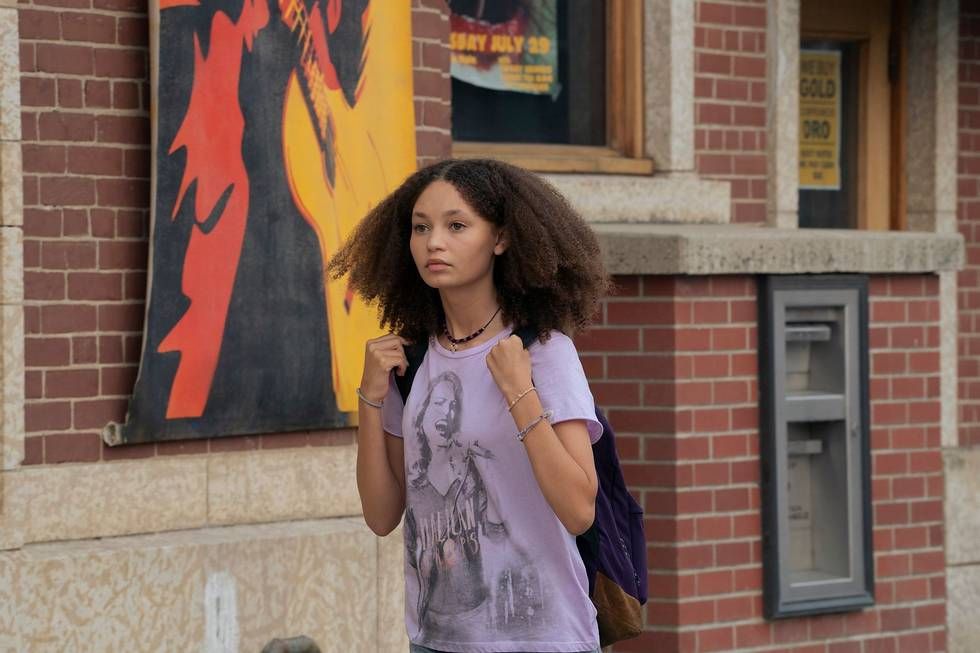
Halican Drops is the name of the band on the T-shirt that Joel’s daughter Sarah (played by Nico Parker) is wearing at the beginning of the show — and the game. There’s no real significance for the band in the game, other than a few posters, but the back of the T-shirt does foreshadow how the game plays out: Each tour stop is another location that Ellie and Joel will visit throughout their journey.
Aside from Sarah’s T-shirt, there are Halican Drops stickers in windows, too — at least according to set pictures.
Back-seat driving
When Joel, Tommy, and Sarah are trying to escape Austin, Texas, during the chaos of the initial outbreak, the show’s directors make clever use of camera angles to make The Last of Us feel like the video game. It’s all in the third-person view, with the camera in the back seat. This is exactly how the game is shot from the truck — you’re still playing as Sarah at that point, and she’s in the back seat. Several of us noted instantly that it just feels like a video game during these shots, a trick that’s of much better use here than in other TV adaptations of games, like Halo, which tried the first-person view — including player UI.
Sarah waking up
Sarah wakes up in her bedroom in the middle of the night in both the game and the TV show, stumbling around sleepily in the dark to see what’s going on. Both scenes provide a little more context, but in different ways. In the video game, you control Sarah, and she’s looking through her house in the dark. You’re not on a set path, and you can pick up things in the house, which provide some clues — one item is a newspaper saying that admittance to local hospitals is up by more than 300%. In the video game, an infected person comes busting through the glass door, but Joel shoots him, before they run outside and Tommy shows up, right on time.
The Last of Us TV show has Sarah waking up, alone, because Joel went to bail Tommy out of jail. She ends up back at the neighbor’s house, bringing their scared dog home. That’s when she gets a very clear glimpse of what’s going on: The infected old lady is munching on her housemates. This scene sets up the horrors of the infected in a different way, giving some more context to show viewers what’s going on.
But there’s also a small, touching reference to the game’s waking up scene, featuring the birthday card Sarah got for Joel — it’s one of the things you can pick up and inspect during this scene from the game. The card itself is on Sarah’s desk in a shot from the show, spotted by former Naughty Dog developer Alexandria Neonakis, the person who designed the card in the game.
Joel’s wrench
Tommy and Joel pull up to their neighbor’s house just as Sarah is getting attacked by the infected old lady, but thankfully Joel has a formidable weapon: a wrench. The heavy wrench looks to be of forearm’s length and probably quite handy while they’re escaping the city, but Joel drops it right away.
Why not save it for later use? Toss it into the back of the pickup truck and you don’t even have to hold it. Our best guess is that this is a nod to the video game — in The Last of Us Part 1 and The Last of Us Part 2, you get max three hits on your everyday melee weapons. They break all the time, and that’s by design. The Last of Us is a game about survival, and you have to scavenge for everything, including bullets and, yes, wrenches for hitting infected things.
Marlene
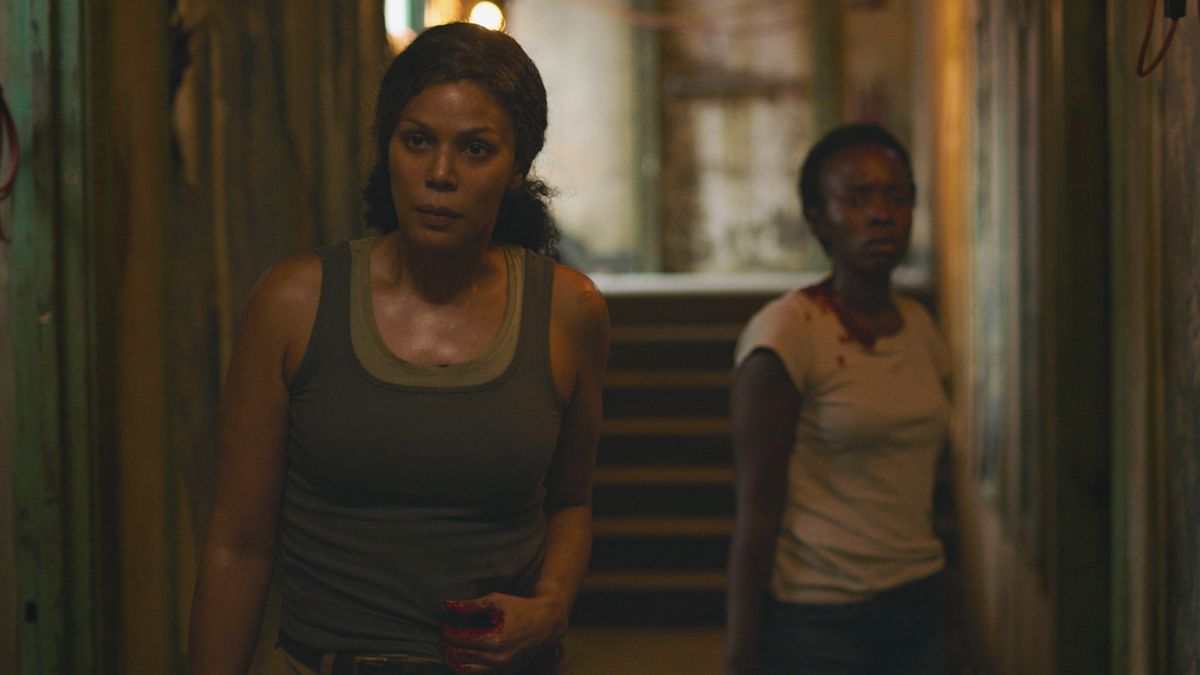
Does Marlene in The Last of Us TV show sound familiar? That’s because the same actor plays both roles. Merle Dandridge plays Marlene in The Last of Us Part 1 and The Last of Us Part 2, taking the role on a third time for the HBO adaptation.
When you’re lost in the darkness
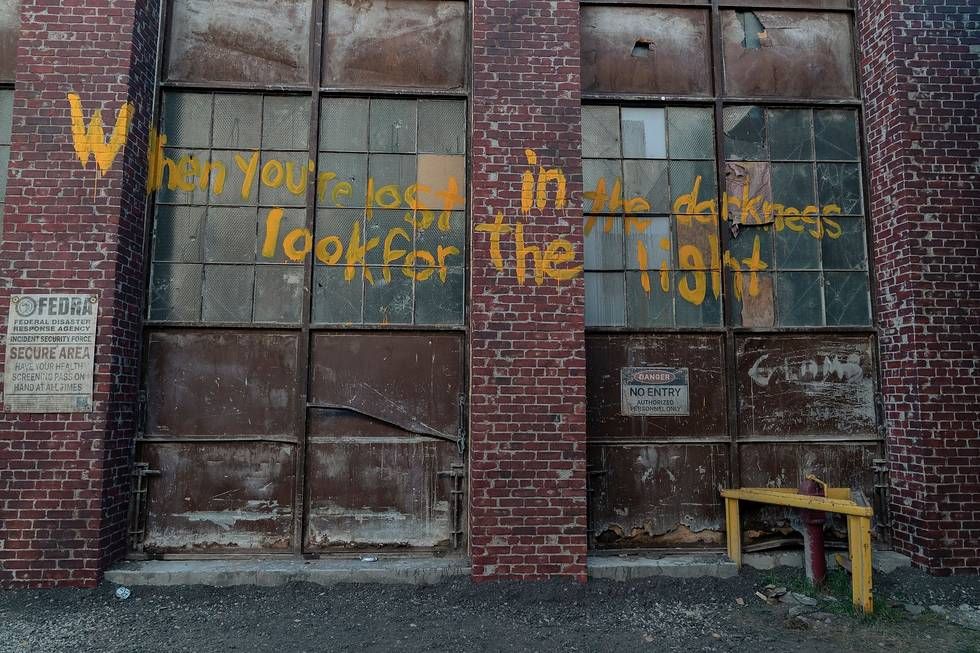
The full phrase, When you’re lost in the darkness, look to the light, appears several times in the show, and it’s plastered all over the games. The phrase is graffiti on walls throughout Boston (and likely elsewhere), a symbol and motto for the revolutionary group the Fireflies — the people who are fighting the oppressive military in the country’s quarantine zones. Marlene’s one of them, and an important one at that: She’s the leader of the Boston faction, and the person who puts Ellie in Joel and Tess’ care.
Curtis and the Viper 2
Curtis and the Viper 2 is the movie that Sarah picks up from the neighbor’s house in The Last of Us, pulled from a shelf alongside the likes of Pink Panther and Murderball. Unlike those two, Curtis and the Viper 2 isn’t a real movie, but it’s still an important one. People who have played The Last of Us Part 2 will remember it tearfully — it’s brought up in the second game as a cheesy ’80s movie, but one that was going to mean a lot to the two people watching it.
“The Long and Winding Road”
When Ellie and Joel are waiting for Tess to scout for the escape from the Boston quarantine zone, Ellie picks up the book of No. 1 music hits and flips through it. There’s one page marked off with a piece of paper — the radio code for Joel and Tess’ smuggling operation. The page it opens to is easy to miss, but may be a nod to the franchise — The Beatles’ “The Long and Winding Road.” This could be reference to the long, winding road that will take Ellie and Joel across the United States, or maybe the long and winding road it’s been since a The Last of Us movie adaptation was announced in 2014.
Bigwig’s daughter
In the same scene where Joel and Ellie are discussing the radio code, Joel starts to question Ellie on her own life — why Marlene and the Fireflies are going through so much trouble to smuggle her out of Boston. No one knows yet of Ellie’s true condition — that she’s immune — and she’s sworn to keep it a secret. Joel asks if Ellie is a “bigwig’s daughter” or something, and Ellie responds that it’s “something like that.” These few lines are pulled straight from the game, but in those scenes it’s Tess talking to Ellie when they’re escaping the zone.
There are also other instances of dialogue straight from the show, like when Sarah tells Joel she got the money for his birthday present — the fixed watch — by selling “hardcore drugs.”
Escaping the quarantine zone
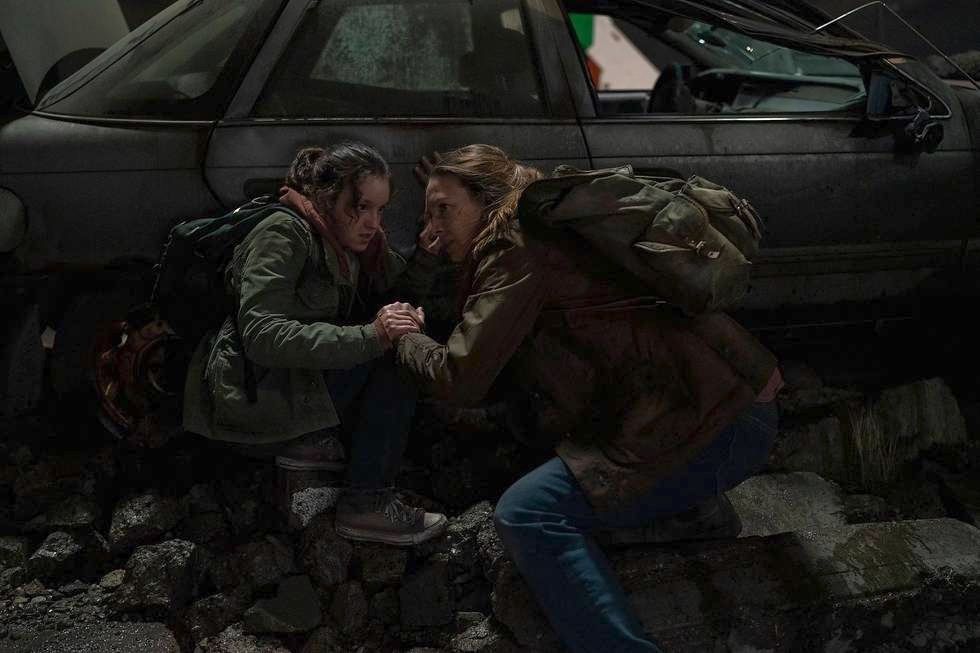
Ellie, Joel, and Tess’ escape from the Boston quarantine zone has a few shots that are heavy references to the game — the overgrown world is dark and gnarled up with cars and buses to crawl under and through. But there’s one scene in particular that stood out for its similarities to an iconic level in The Last of Us Part 1: Chapter 3, “The Outskirts.” Crawling through tunnels and debris, the trio has to dodge spotlights and flashlights from the military guarding the quarantine zone wall — spots in the game where it’s essential to play the game as stealthily as possible. Visually, the show does a clever job of mimicking that feeling.
- SEO Powered Content & PR Distribution. Get Amplified Today.
- Platoblockchain. Web3 Metaverse Intelligence. Knowledge Amplified. Access Here.
- Source: https://www.polygon.com/23550840/last-of-us-easter-eggs-game-tv-hbo-season-1
- About
- according
- across
- Action
- added
- Alcohol
- All
- alone
- alongside
- amount
- Animation
- anna
- announced
- Another
- appeal
- appreciate
- Arcade
- AREA
- around
- as
- austin
- badly
- bail
- band
- beautiful
- because
- before
- beginning
- behind
- BEST
- Better
- blocks
- blowing
- book
- boston
- breakfast
- bringing
- brought
- Buses
- call
- calling
- car
- care
- cars
- chain
- change
- Chapter 3
- City
- Classic
- code
- coming
- Companies
- Compound
- condition
- Control
- could
- course
- Dark
- deal
- dedicated
- Design
- designed
- details
- Developer
- dialogue
- different
- directors
- discussing
- Dodge
- dog
- down
- Drawing
- drops
- Drugs
- During
- Eggs
- ends
- England
- Enter
- entirely
- environmental
- essential
- everyone
- everything
- expansion
- explains
- extremely
- facing
- factory
- familiar
- fans
- Farms
- Fighting
- Fighting game
- finding
- finds
- First
- Former
- formidable
- Franchise
- Freedom
- friend
- front
- full
- game
- Games
- Gaming
- GAS
- getting
- Giving
- Glass
- going
- good
- Group
- Handy
- HBO
- head
- Health
- here
- hidden
- hits
- hitting
- hold
- holding
- Home
- hospitals
- hotel
- House
- How
- HTTPS
- huge
- Humans
- i
- IGN
- immediately
- important
- Included
- Including
- Indonesia
- infection
- innovative
- INSIDE
- Inspiration
- IT
- jail
- Jakarta
- Job
- journey
- keeping
- Key
- kids
- known
- last
- Last of Us
- leader
- LEARN
- Level
- Little
- local
- located
- location
- locked
- Long
- looking
- major
- Majority
- make
- MAKES
- Making
- marked
- massachusetts
- May
- Media
- Melee
- Men
- microphone
- Middle
- Military
- money
- more
- mortal
- Mortal Kombat
- movie
- Museum
- Music
- Naughty Dog
- need
- New
- New England
- noted
- Old
- One
- opens
- operation
- original
- Other
- outbreak
- own
- palm
- Paper
- part
- particular
- People
- pick
- picking
- Pickup
- plato
- plato data intelligence
- platodata
- platogaming
- play
- player
- players
- Playing
- Plenty
- Point
- Polygon
- possible
- present
- pretty
- probably
- Provide
- putting
- quarantine
- question
- quickly
- quite
- Radio
- Real
- red
- Remember
- resource
- Revealed
- revel
- revolutionary
- right
- road
- role
- roles
- Run
- scared
- School
- season
- Season 1
- SEAT
- Secret
- selling
- sense
- Series
- set
- several
- shops
- similarities
- small
- So
- Society
- SOLVE
- something
- spread
- Stars
- start
- started
- States
- station
- stations
- statue
- Stickers
- still
- successfully
- supply
- surprises
- Survival
- symbol
- Take
- taking
- talking
- tells
- texas
- The
- The Game
- The Last of Us
- themselves
- things
- third
- Through
- Throughout
- time
- times
- together
- toss
- truck
- tv
- twists
- ui
- under
- United
- United States
- unlock
- up
- us
- usually
- Venue
- Video
- video games
- View
- viewers
- virus
- walking
- Watch
- Water
- What
- WHO
- windows
- woman
- Work
- working
- world
- worldwide
- Wrench
- years
- zephyrnet
